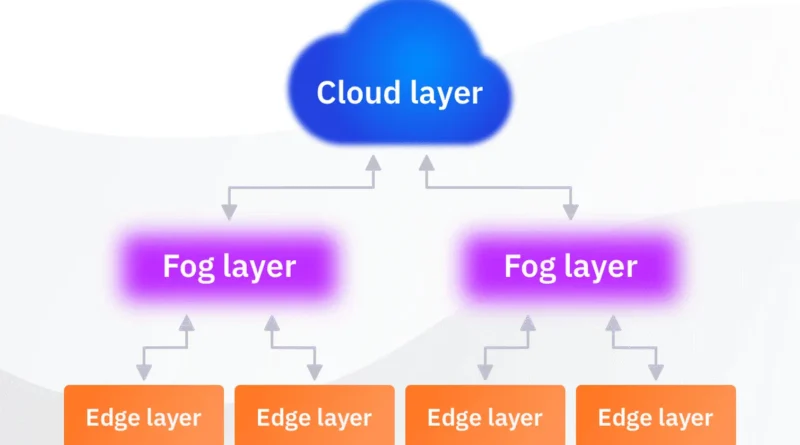Different Layers Of Cloud Computing
Cloud computing has revolutionized. The way businesses and individuals manage and deliver services. At the core of this revolutionary technology lies a multi layered architecture. That ensures seamless operations, scalability, and flexibility. In this guide we will delve into the different layers of cloud computing. Exploring their roles, benefits, and real world applications. From the foundational infrastructure to the user facing applications. Each layer plays a vital role in the cloud ecosystem.
We have Briefly Explain Cloud And Quantum Computing
Different Layers Of Cloud Computing:
Cloud computing is structured into several layers. Each serving a specific purpose and contributing to the overall functionality of the cloud ecosystem. Let’s take a closer look at these layers.
Network Layer:
The network layer facilitates communication between different cloud components and services. It ensures secure data transmission. Load balancing, and network optimization. Advanced networking solutions enhance the overall performance and reliability of cloud services.
Security and Compliance Layer:
Ensuring the security and compliance of cloud services is paramount. This layer encompasses identity and access management. Encryption, threat detection and regulatory compliance. Robust security measures protect data and applications from unauthorized access and cyber threats.
Monitoring and Management Layer:
Efficient cloud management involves monitoring resources or optimizing performance and automating processes. This layer incorporates tools and services. That provide insights into resource utilization, availability and overall health of the cloud infrastructure.
Data Management Layer:
The data management layer focuses on storing. Processing, and analyzing vast amounts of data generated by cloud applications. This layer includes databases, data warehouses and data lakes. That enable businesses to derive valuable insights from their data.
Integration and Middleware Layer:
Integration and middleware solutions. Facilitate communication and data exchange between different applications and services within the cloud ecosystem. This layer ensures seamless interoperability and smooth data flow.
Development and Deployment Layer:
DevOps practices are central to the development and deployment layer. This layer involves continuous integration or continuous delivery and automated testing enabling rapid and reliable application deployment.
Scalability and Elasticity Layer:
Scalability and elasticity are crucial aspects of cloud computing. This layer enables resources to be dynamically allocated and deallocated based on demand. Auto scaling and load balancing mechanisms ensure optimal performance during traffic spikes.
Compliance and Governance Layer:
Cloud environments must adhere to regulatory standards and governance policies. This layer ensures compliance with industry regulations and internal policies. Promoting accountability and transparency.
User Experience Layer:
The user experience layer focuses on delivering a seamless and intuitive interface to end-users. It encompasses user interface design, responsiveness and accessibility to provide an exceptional user experience.
Automation and Orchestration Layer:
Automation and orchestration streamline complex workflows and processes. This layer involves creating workflows that automate tasks and interactions. Between different cloud services reducing manual intervention.
Machine Learning Layer:
Machine learning are increasingly integrated into cloud services to enhance decision making and automate processes. This layer enables the development and deployment of powered applications and services.
Edge Computing Layer:
Edge computing brings computation closer to the data source. Reducing latency and enabling real-time processing. This layer is crucial for applications that require immediate responses. Such as IoT devices and real-time analytics.
Disaster Recovery and Business Continuity Layer:
Ensuring business continuity and disaster recovery is a critical aspect of cloud computing. This layer involves backup solutions data replication and failover mechanisms to mitigate downtime and data loss.
Hybrid and Multi-Cloud Layer:
Many organizations adopt hybrid and multi-cloud strategies to balance performance cost and data sovereignty. This layer involves integrating and managing services across multiple cloud providers and on premises infrastructure.
Ecosystem and Marketplace Layer:
Cloud providers offer a range of services solutions and applications through their ecosystems and marketplaces. This layer enables customers to explore and integrate third party services to enhance their cloud environment.
Cost Management and Optimization Layer:
Effective cost management and optimization are essential for maximizing the benefits of cloud computing. This layer involves monitoring resource usage. Identifying cost-saving opportunities and optimizing spending.
Conclusion:
In the rapidly evolving digital landscape understanding the different layers of cloud computing is essential for businesses aiming to stay competitive and innovative. From the foundational IaaS to the user friendly SaaS each layer contributes to the cloud is transformative power. As cloud computing continues to reshape industries embracing its advantages can lead to enhanced efficiency collaboration and growth.

